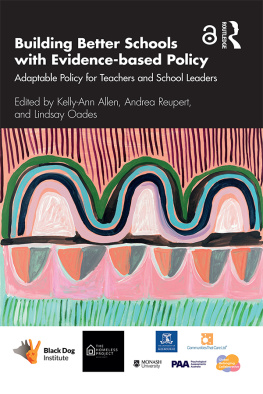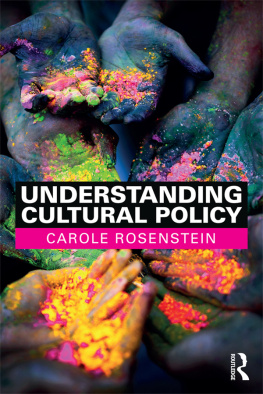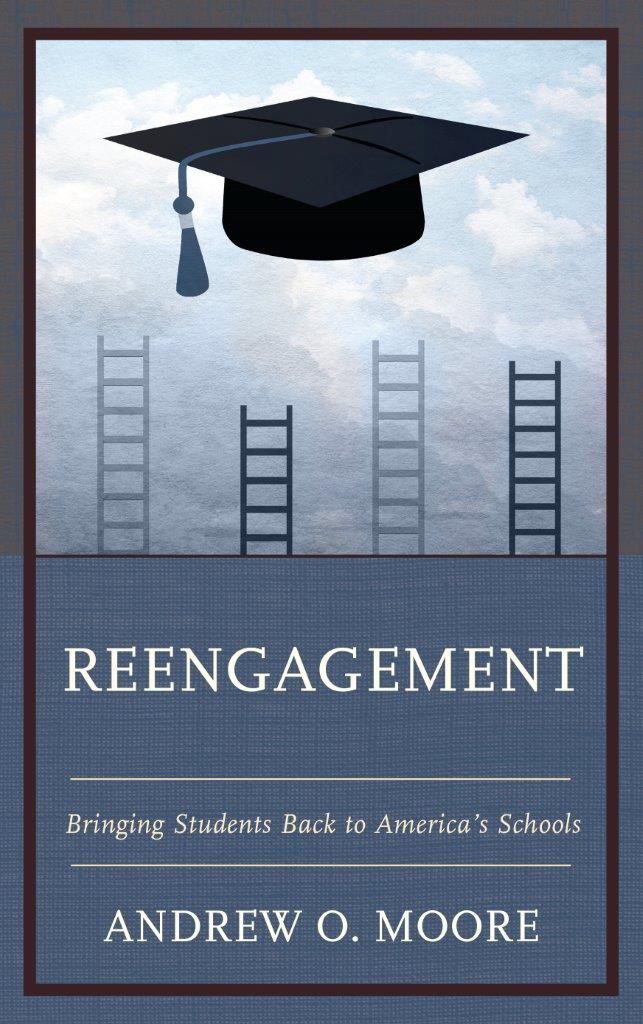Reengagement
Reengagement
Bringing Students Back
to Americas Schools
Andrew O. Moore
ROWMAN & LITTLEFIELD
Lanham Boulder New York London
Published by Rowman & Littlefield
A wholly owned subsidiary of The Rowman & Littlefield Publishing Group, Inc.
4501 Forbes Boulevard, Suite 200, Lanham, Maryland 20706
www.rowman.com
Unit A, Whitacre Mews, 26-34 Stannary Street, London SE11 4AB
Copyright 2016 by Andrew O. Moore
All rights reserved. No part of this book may be reproduced in any form or by any electronic or mechanical means, including information storage and retrieval systems, without written permission from the publisher, except by a reviewer who may quote passages in a review.
British Library Cataloguing in Publication Information Available
Library of Congress Cataloging-in-Publication Data
ISBN 978-1-4758-2674-6 (cloth : alk. paper) -- ISBN 978-1-4758-2675-3 (pbk. : alk. paper) -- ISBN 978-1-4758-2676-0 (electronic)
 TM The paper used in this publication meets the minimum requirements of American National Standard for Information Sciences Permanence of Paper for Printed Library Materials, ANSI/NISO Z39.48-1992.
TM The paper used in this publication meets the minimum requirements of American National Standard for Information Sciences Permanence of Paper for Printed Library Materials, ANSI/NISO Z39.48-1992.
Printed in the United States of America
Foreword
If theres one value Ive seen strong communities share, its that they offer everyone a chance to reach their potential and make their contribution. A caring community leaves no one behind, and a smart community wastes no ones talents. Thats why I am so heartened by the movement growing, in Boston and in America, to bring high school dropouts back to school. It no longer makes sense, ethically or economically, to give up on young people. As the chapters in this book explain, we know how to get them back on track so they can graduate from high school on the way to becoming financially independent workers and productive members of our communities.
Dropout reengagement is the right thing to do for social justice, for public safety, and from an economic perspective as well. Local economies depend on a strong local workforce. With the Baby Boom generation retiring, we cant afford to leave young adults unprepared for twenty-first-century careers. In addition, public budgets are weighed down by the costs associated with the struggles of high school dropouts, from health care to corrections. Reengagement is a smart investment.
If the case for bringing disconnected students back to school is so compelling, why is it only now beginning to get traction? Until recently, high school dropouts were no ones responsibility. School systems did not view those who had left as part of the equation, and the local economy had little use for them. But in Boston and a few other cities, we began to realize the social cost we were paying for leaving these young people adrift. So we began to reach out to high school dropouts to see if they were interested in restarting their education.
As it turned out, many were. And their willingness to return created the enthusiasm necessary for an ambitious reengagement strategy to gather momentum. Outreach helped us to realize that a variety of alternative education programs would be necessary to get these young men and women on the path to community college and beyond. Working with returning students also taught us how to keep other students from dropping out in the first place.
Good data analysis proves critical to these efforts. It starts with measures as simple as counting the number of students who drop out annually. In Boston, we have seen that number fall from over 1,900 annually ten years ago to 700 by the most recent count. Once a reengagement strategy is in full swing, it is important to count the number of students who come in for a first conversation, the number who reenroll, the number who receive appropriate reassignments, and the number who complete their first year back in school.
Equally important: understanding the population that is willing to reengage, by age and by previous academic experience, and with an eye toward overcoming language barriers and accommodating disabilities. Our systems need to be sensitive to the personal circumstances that young adults must manage in order for them to succeed when they return. Thus, community agencies and social service providers become part of the solution.
Despite success so far, we have more to do, in Boston and across the nation. While it represents great progress that we reduced Bostons dropout numbers by more than half, this means that the other half are still on the streets without a ticket to further education or a decent job. Our dropout goal needs to be zero. We need to make steady progress toward that goal every year. And we need a strategy for helping those who are still falling through the cracks.
The publication of this book marks an important new phase for the emerging dropout reengagement movement in America. Sharing knowledge and advancing dialogue about reengagement are critical components of any serious effort to address the dropout crisis and its consequences. Complementing the dialogue, the National League of Cities supports a network of communities that reach out to those who have left school. The national Opportunity Youth movement, led by organizations such as the Aspen Institute and Jobs for the Future, promotes the potential for reengaging out-of-school youth and guiding young adults onto career pathways. Mayors and school superintendents have launched reengagement initiatives that cross traditional boundaries in order to leave no young adult behind.
In Boston, we take pride in helping to lead these urban initiatives and this nationwide movement. We have found that we can, in fact, measure the benefits to our rising generation of young men and women, and to society as a whole. If we hold ourselves accountable collectively, we will make great progress, and we will become stronger as city, state, and national communities.
Martin J. Walsh, Mayor of Boston
Preface
Seizing the opportunity to gather contributions to a volume on the educational reengagement of out-of-school youth responds to several recognitions about the current landscape of discussion and practice regarding education and youth development. First and foremost, the book provides a means to document local practices and policies in detail, and to convey potential implications for other communities. The past decade has witnessed tremendous innovation in the form of reengagement centers and programs; the stories of that innovation remain largely untold, the lessons from the stories as yet uncaptured.
In a similar vein, spreading effective practices to meet common challenges requires a go-to source of advice based upon experience. To date, only the briefest how-to guidance has appeared in print. As the reengagement field continues to evolve at a rapid pace, a much richer variety of experience has become available. Writing this book offers the opportunity to pull together widely dispersed knowledge and experience into one place.
The passing reference to common challenges above calls out the importance of the subject of education reengagement. Huge investments and high degrees of policy attention now go toward reforming or reinventing high schools for greater efficacy in the twenty-first century, a trend likely to continue. High schools may indeed emerge that no longer fail to meet the needs of the 20 to 50 percent of students who must now find their way on their own through limited alternative and adult education options. But for the foreseeable future, millions of older youth in the United States experience highly tenuous or severed relationships with credentialing pathways, and they often need assistance to reengage.
Next page



 TM The paper used in this publication meets the minimum requirements of American National Standard for Information Sciences Permanence of Paper for Printed Library Materials, ANSI/NISO Z39.48-1992.
TM The paper used in this publication meets the minimum requirements of American National Standard for Information Sciences Permanence of Paper for Printed Library Materials, ANSI/NISO Z39.48-1992.